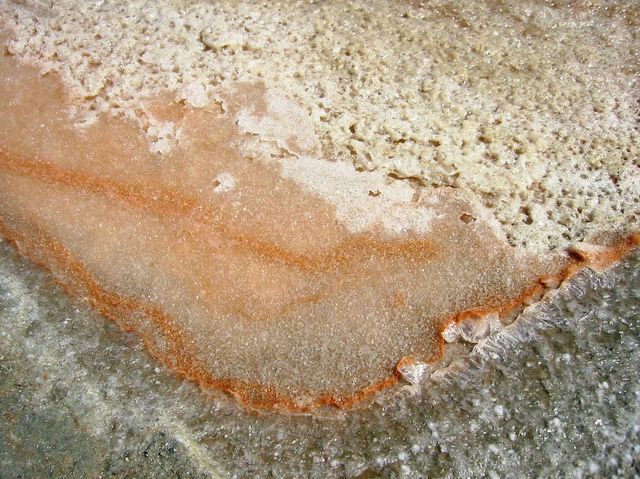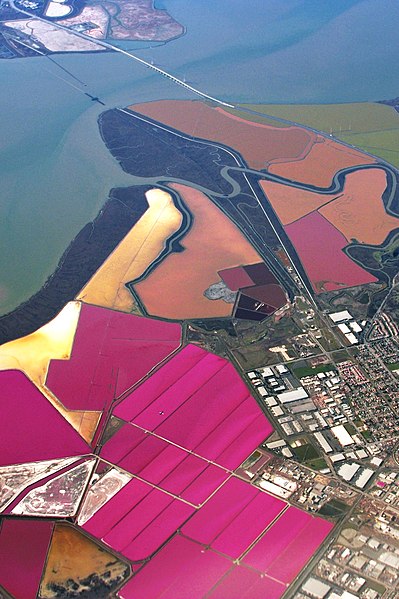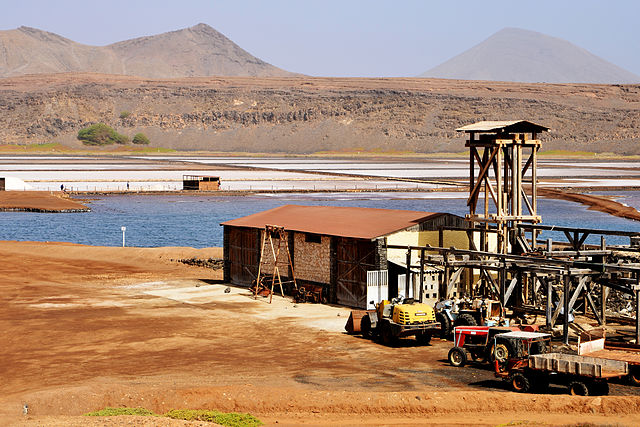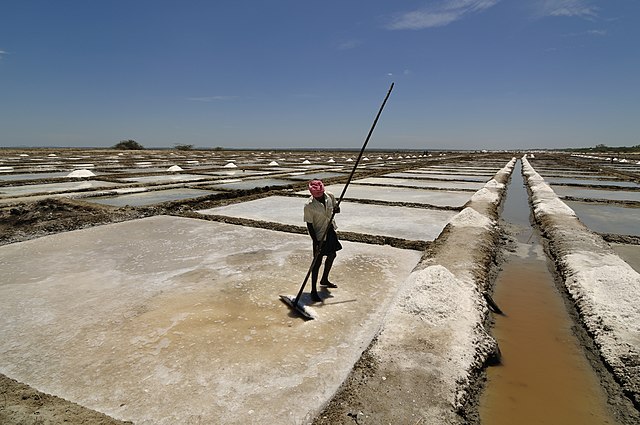Dunaliella salina is a type of halophile unicellular green algae especially found in hypersaline environments, such as salt lakes and salt evaporation ponds. Known for its antioxidant activity because of its ability to create a large amount of carotenoids, it is responsible for most of the primary production in hypersaline environments worldwide, and is also used in cosmetics and dietary supplements.
Dunaliella salina
Salt ponds in San Francisco Bay
Dunaliella salina orange-colored water of the salt lake Sivash, Crimea
Dunaliella salina in orange, tentatively identified from the hypersaline Lake Tyrrell, Victoria, Australia. Alongside are small haloarchaeons, Haloquadratum walsbyi, with their flat square-shaped cells.
A salt evaporation pond is a shallow artificial salt pan designed to extract salts from sea water or other brines. The salt pans are shallow and expansive, allowing sunlight to penetrate and reach the seawater. Natural salt pans are formed through geologic processes, where evaporating water leaves behind salt deposits. Some salt evaporation ponds are only slightly modified from their natural version, such as the ponds on Great Inagua in the Bahamas, or the ponds in Jasiira, a few kilometres south of Mogadishu, where seawater is trapped and left to evaporate in the sun.
Salt evaporation pond in Manaure, La Guajira, Colombia
San Francisco Bay salt ponds
Natural salt evaporation ponds at Pedra de Lume, Sal island, Cape Verde
A salt pan worker in a salt evaporation pond in Tamil Nadu, India.








